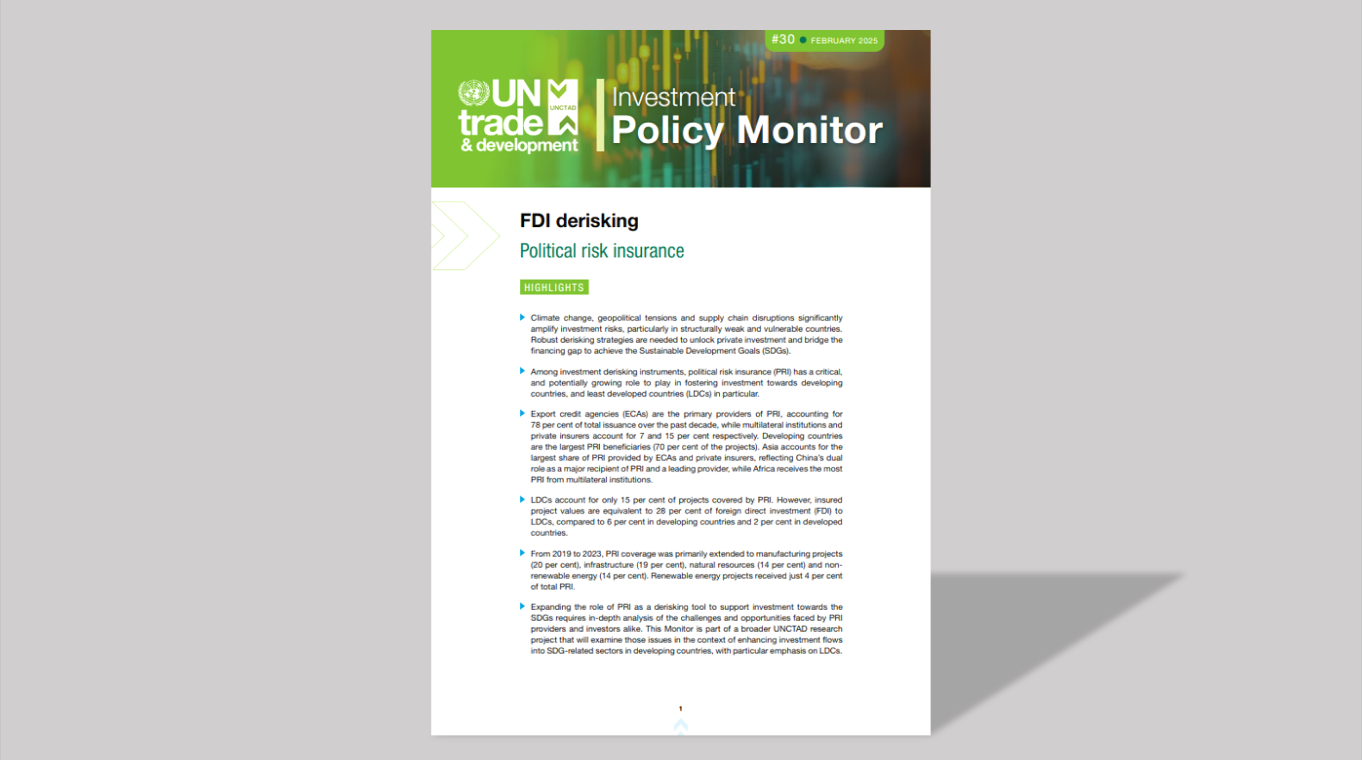Investment Policy Monitor 30: Political risk insurance
This Investment Policy Monitor explores the role and significance of political risk insurance (PRI) in fostering FDI in developing countries, particularly in LDCs, highlighting key industry trends, including major providers, primary recipients and the geographical and sectoral distribution of projects supported by PRI.
This Monitor is part of a broader UNCTAD research project that will examine the main challenges and opportunities faced by PRI providers, in the context of enhancing flows into SDG-related sectors in developing countries, with particular emphasis on LDCs.
The conclusions drawn from this analysis will inform policy recommendations to enhance the role of PRI to contribute more effectively to the SDGs.
Highlights:
- Climate change, geopolitical tensions and supply chain disruptions significantly amplify investment risks, particularly in structurally weak and vulnerable countries. Robust derisking strategies are needed to unlock private investment and bridge the financing gap to achieve the Sustainable Development Goals (SDGs).
- Among investment derisking instruments, political risk insurance (PRI) has a critical, and potentially growing role to play in fostering investment towards developing countries, and least developed countries (LDCs) in particular.
- Export credit agencies (ECAs) are the primary providers of PRI, accounting for 78 per cent of total issuance over the past decade, while multilateral institutions and private insurers account for 7 and 15 per cent respectively. Developing countries are the largest PRI beneficiaries (70 per cent of the projects). Asia accounts for the largest share of PRI provided by ECAs and private insurers, reflecting China’s dual role as a major recipient of PRI and a leading provider, while Africa receives the most PRI from multilateral institutions.
- LDCs account for only 15 per cent of projects covered by PRI. However, insured project values are equivalent to 28 per cent of foreign direct investment (FDI) to LDCs, compared to 6 per cent in developing countries and 2 per cent in developed countries.
- From 2019 to 2023, PRI coverage was primarily extended to manufacturing projects (20 per cent), infrastructure (19 per cent), natural resources (14 per cent) and non- renewable energy (14 per cent). Renewable energy projects received just 4 per cent of total PRI.
- Expanding the role of PRI as a derisking tool to support investment towards the SDGs requires in-depth analysis of the challenges and opportunities faced by PRI providers and investors alike. This Monitor is part of a broader UNCTAD research project that will examine those issues in the context of enhancing investment flows into SDG-related sectors in developing countries, with particular emphasis on LDCs.
















